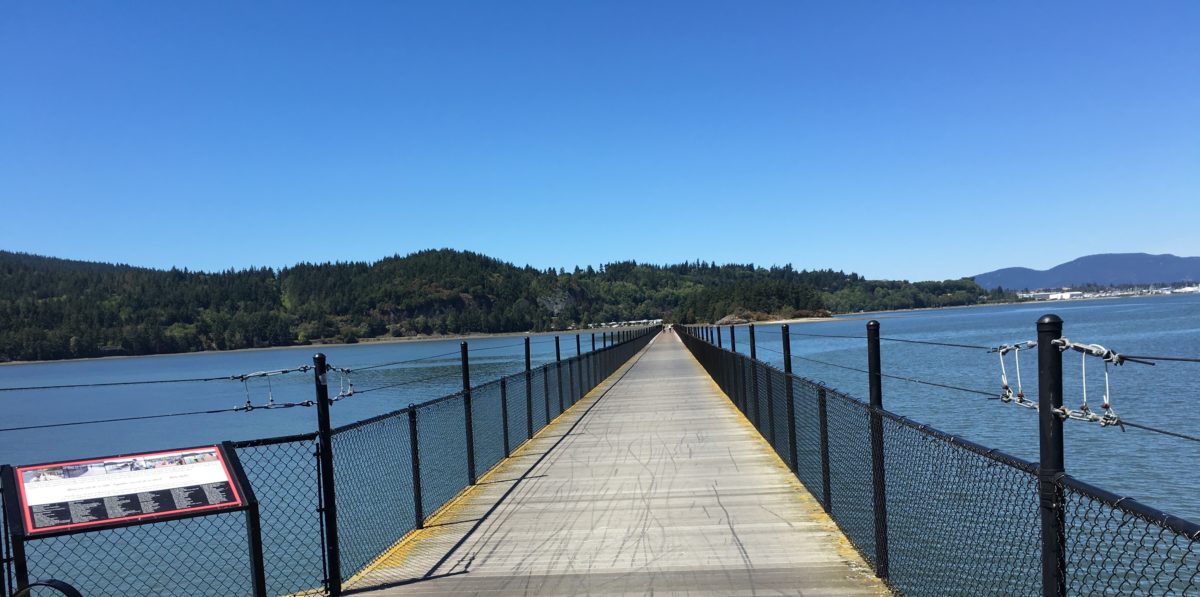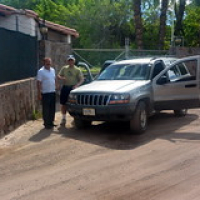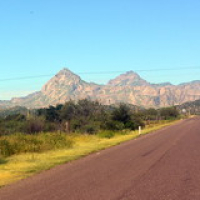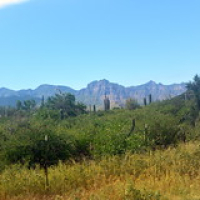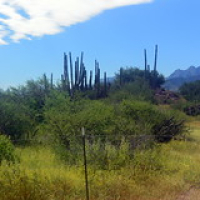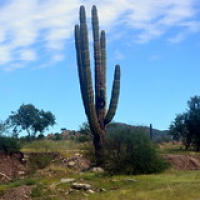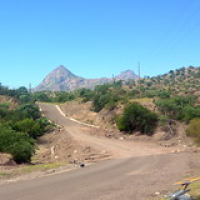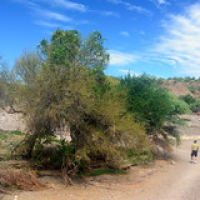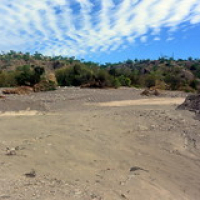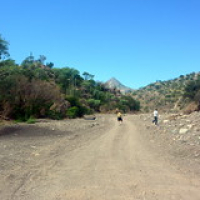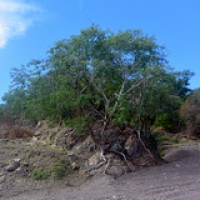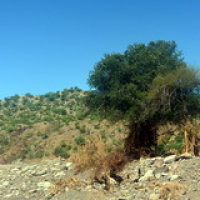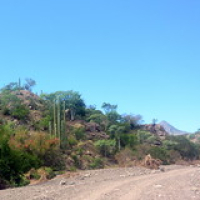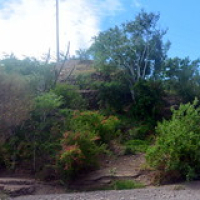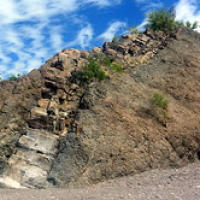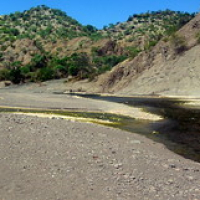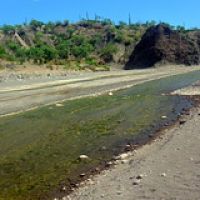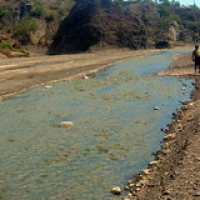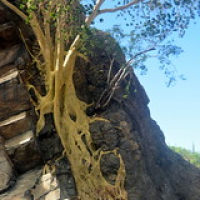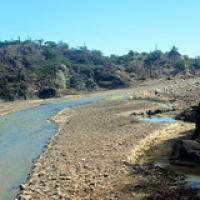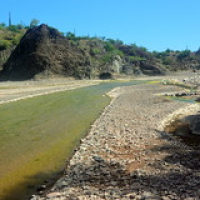Mission San Javier is on the Pacific side of the Sierra de la Giganta Mountains in Baja California Sur, Mexico about 90 minutes southwest of Loreto.. The mission was the second mission in the California’s with the Loreto mission being the first. In this blog posting we will discuss how to get to the mission, present a brief history of the mission, and things to see and do on a trip to the mission. Below is a map showing Mission San Javier relative to Loreto.

Ways to get to Mission San Javier
Tours are available to visit the mission from various Loreto tour operators, You can rent a car to get there. You might also be able to strike a deal with a taxi driver. We got a local driver to take us from our hotel to Mission San Javier and back for ninety dollars. We also gave the driver a nice tip when we were dropped at our hotel. Below is a picture of my buddy Chuck, and our driver as we were leaving our hotel.
Weather as an influence on your trip to Mission San Javier
Late May to early September can be very hot in Baja California Sur, and I would suggest that this is not a good time to visit. We made the trip in late September when the temperatures were a little lower. Weather reports should also be checked for rain. If there is any chance of rain, it is my opinion that one should not visit the mission. When it rains there are flash floods, and road washouts. If there is rain while you are on a trip to the mission, there is a good chance that you will not be able to get to the mission, or return from the mission. This could extend your trip by several days. The best time to go is actually a few weeks after it has rained. The areas between Loreto and Mission San Javier turns green for a short time (a few weeks) after a rain. We were lucky on our trip to go four weeks after a major rain storm (these are very infrequent in this area, and are unpredictable) to see the blooming desert after the rain. So when scheduling your vacation to the Loreto area, keep the time of the year in mind before scheduling your visit.
Our trip to Mission San Javier
A series of pictures with comments follow are shown to describe our trip from Loreto to Mission San Javier.


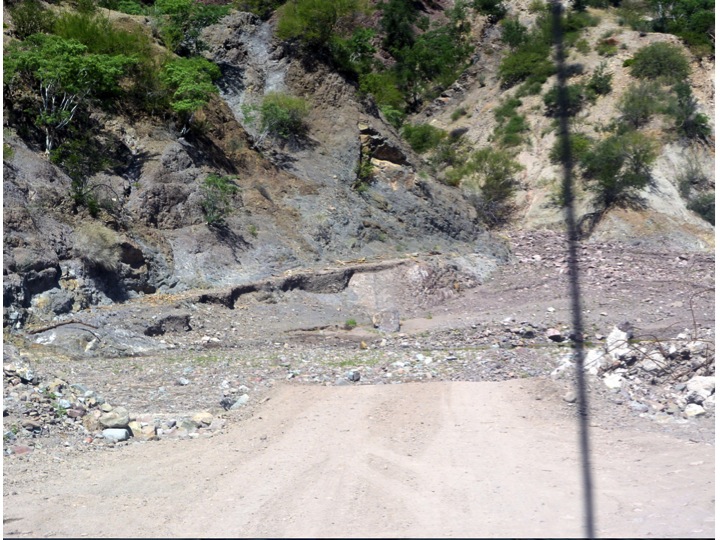



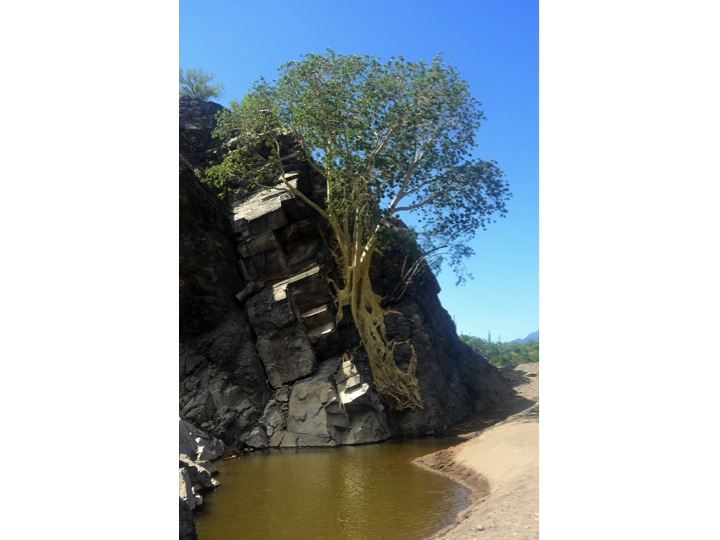



Arriving at Mission San Javier


A little history on Mission San Javier
Mission San Javier was the second of the California (both upper and lower California), and was established in 1701. I have seen another source claiming the missions was founded in 1699, but was most to the present site in 1701. The mission’s structure was completed between 1744 and 1758 , but as seen on the signed posted by the Mexican Federal Government as you enter town, 1701 is the recognized year of the mission’s founding. Jesuits were the founders of these missions. Francisco Maria Piccolo, a Jesuit educated in Spain was the original founder of the mission, and he also worked on to establish other missions in Baja California.
A secure source of water was one of the main concerns when a missions were established. Usually, missions were built near a river with a dam upstream with an aqueduct to take water to the mission, agriculture, and town water. The satellite picture below shows the original dam built for Mission San Javier, and the agricultural around the mission.

Photos in & around Mission San Javier
Below are photos from the mission, and the immediate area around the mission.




The pictures below are from the grounds surrounding the mission.




Return to Loreto
The photos below are from our return to Loreto from the mission. For this we had to recross the Sierra de la Giganta. After crossing the mountains, the road follows the river back to Loreto.









So how much time do you need to visit Mission San Javier when traveling from Loreto?
I would recommend that you allow at least six hours of time to visit Mission San Javier to both go and return. Some tour operators claim that you can do this trip in three hours. It may be possible to do this three in three hours, but I do not think you would enjoy a tour a short as this. Further, and three-hour tour, assuming there was good weather, would only allow you to get to the mission, drive up to the mission and see from your car / van, and then return to Loreto.
Chuck and I really enjoyed our trip to Mission San Javier, and would recommend it to other visitors to Loreto.
Please feel free to post any questions or comments that you may have, and I will do my best to respond with 24 hours. We love comments and questions, it provides other views and experiences, and helps to improve the blog.
All the pictures from my Mission San Javier trip can be viewed below. An enlargement can be seen by clicking your mouse on a picture. Once a picture is enlarged, you can then scroll forward or backward through the gallery by clicking in the lower left corner of the slide.

